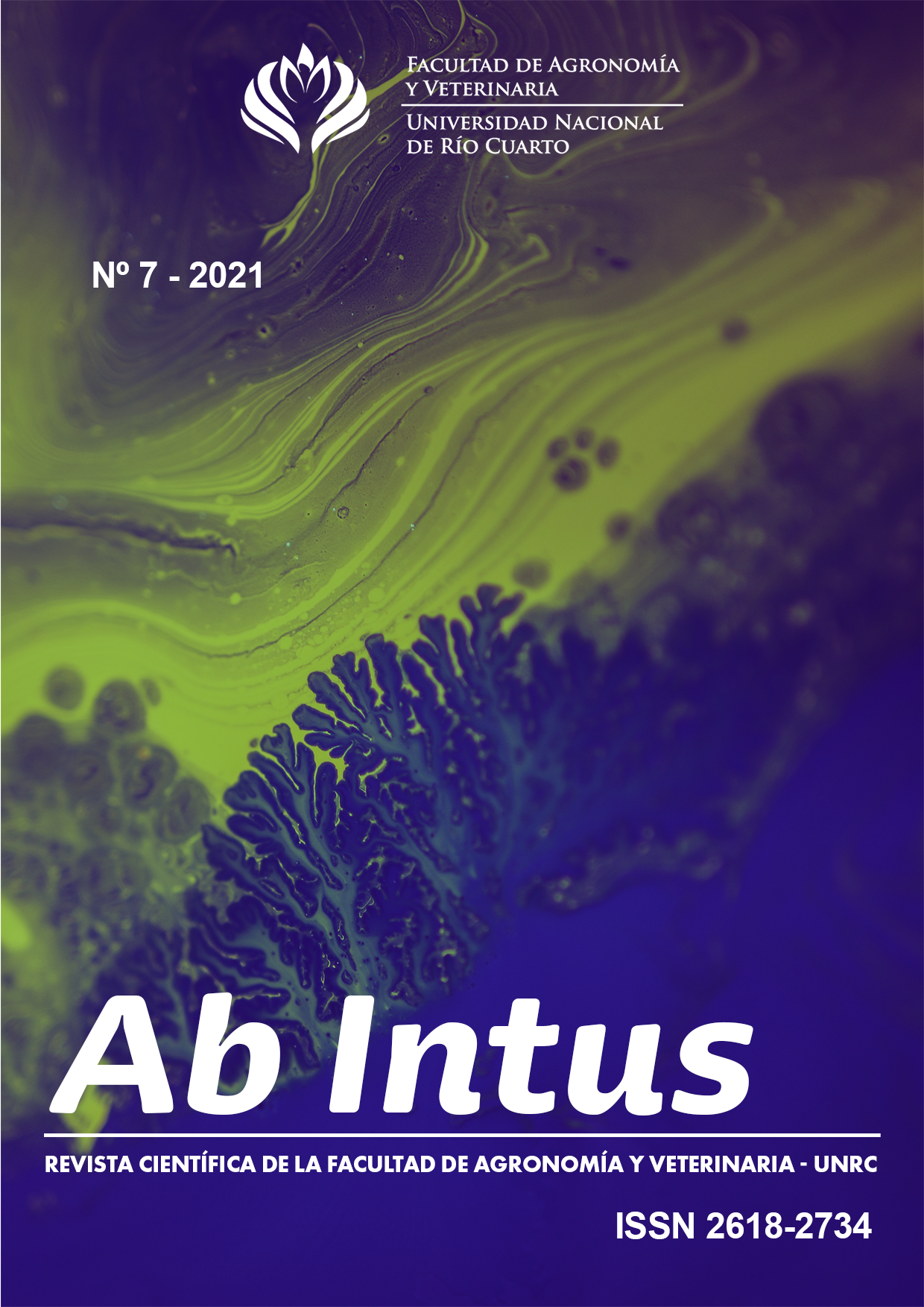Eficacia de control de insecticidas sobre Caliothrips phaseoli en soja para la región centro-sur de Córdoba
Abstract
In the thrips complex present in soybeans, Caliothrips phaseoli is the predominant species in the south-central province of Córdoba. This tysanopter develops part of its cycle affecting the leaflets and impacting the crop yield. The objective of this study was to determine the control efficacy on C. phaseoli of insecticides used on soybeans in the center-south of Córdoba. The trials were conducted in Melo (2019/20) and Almafuerte (2020/21), under a randomized complete block design with three replications. The treatments were: T1-Bifenthrin (25%) 150cc / ha, T2-Chlorantraniliprole (20%) 30cc / ha, T3-Chlorpyrifos (48%) 800cc / ha, T4-Methoxyphenozide (30%) + Spinetoram (6%) 120cc / ha and T5-Control without insecticide, making a single application in R3. The initial population of thrips larvae was evaluated and then at 1, 7 and 14 days after application (DDA), the control efficacy was also determined through Abbot and the final yield. The insecticides tested decreased the abundance of C. phaseoli in relation to the control, for both locations and times of evaluation, with the exception of Chlorantraniliprole, which showed no control over thrips, highlighting on the other hand the performance of Spinoteram + Methoxyphenocide, with an efficacy superior and consistent up to 14 DAA. The performance of the insecticide treatments, in both trials, was significantly higher than the control, with the exception of Chlorantraniliprole. The results of this work contribute to the adequate choice of insecticides by the professionals involved in the sanitary management of soybeans in the south-central part of Córdoba.
Downloads
Published
How to Cite
Issue
Section
License
Copyright (c) 2022 Ab Intus

This work is licensed under a Creative Commons Attribution-NonCommercial 4.0 International License.


















